Kannon Bodhisattva
Kannon, known as The Bodhisattva of Mercy, became popular within the Tendai and Shingon sects of Japanese Buddhism in the Heian Era (794-1195) as a celestial being who could help those suffering in this life while the Buddha Amida saved them in the next.
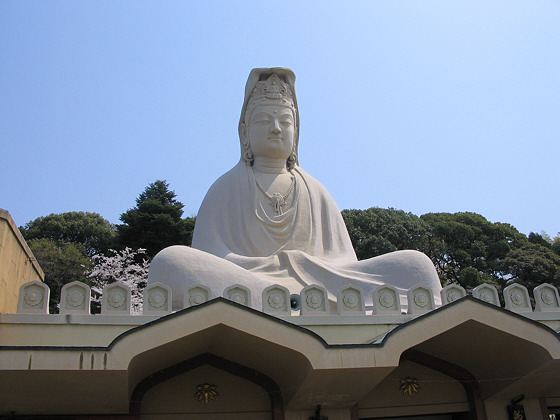
Ryozen Kannon, Kyoto.
It is generally accepted that Kannon represents the Mahayana Buddhist bodhisattva (an enlightened being who postpones
buddhahood to help others) Avalokitashvara. In China, Avalokitashvara is thought to have merged with the legendary
Princess Miao Shan and/or a Daoist goddess to become Guan Yin, the female Goddess of Compassion. By the time worship of
the bodhisattva reached Japan, images had a variety of styles - some androgenous, but many of them female, carved in
either Hindu or Tang Dynasty Chinese styles.
Kannon and Seishi bodhisattva are often depicted together as attendants of Amida, representing compassion and wisdom
respectively. However, worship of Kannon was believed to earn the faithful a place in her Southern Paradise. For this
reason, some Kannon temple halls - such as the one at Kyoto's Kiyomizudera Temple - face
south.
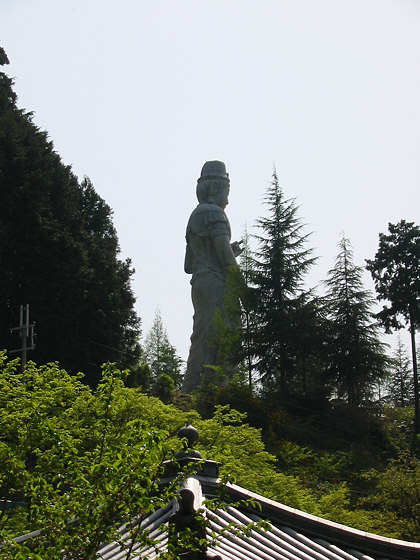
20-metre statue of Kannon at Tsubosakadera Temple in Nara.
Murasaki Shikibu mentions Kannon and pilgrimages to Kannon temples in her novel The Tale of Genji several times.
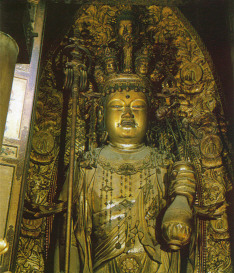
Hasedera Temple Kannon.
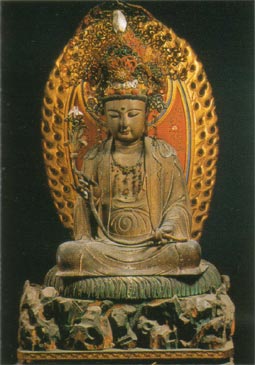
Yokihi Kannon at Sennyuji Temple.
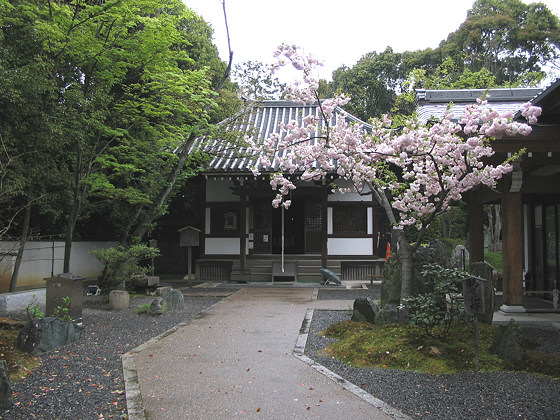
Kannon Hall at Sennyuji Temple, Kyoto.